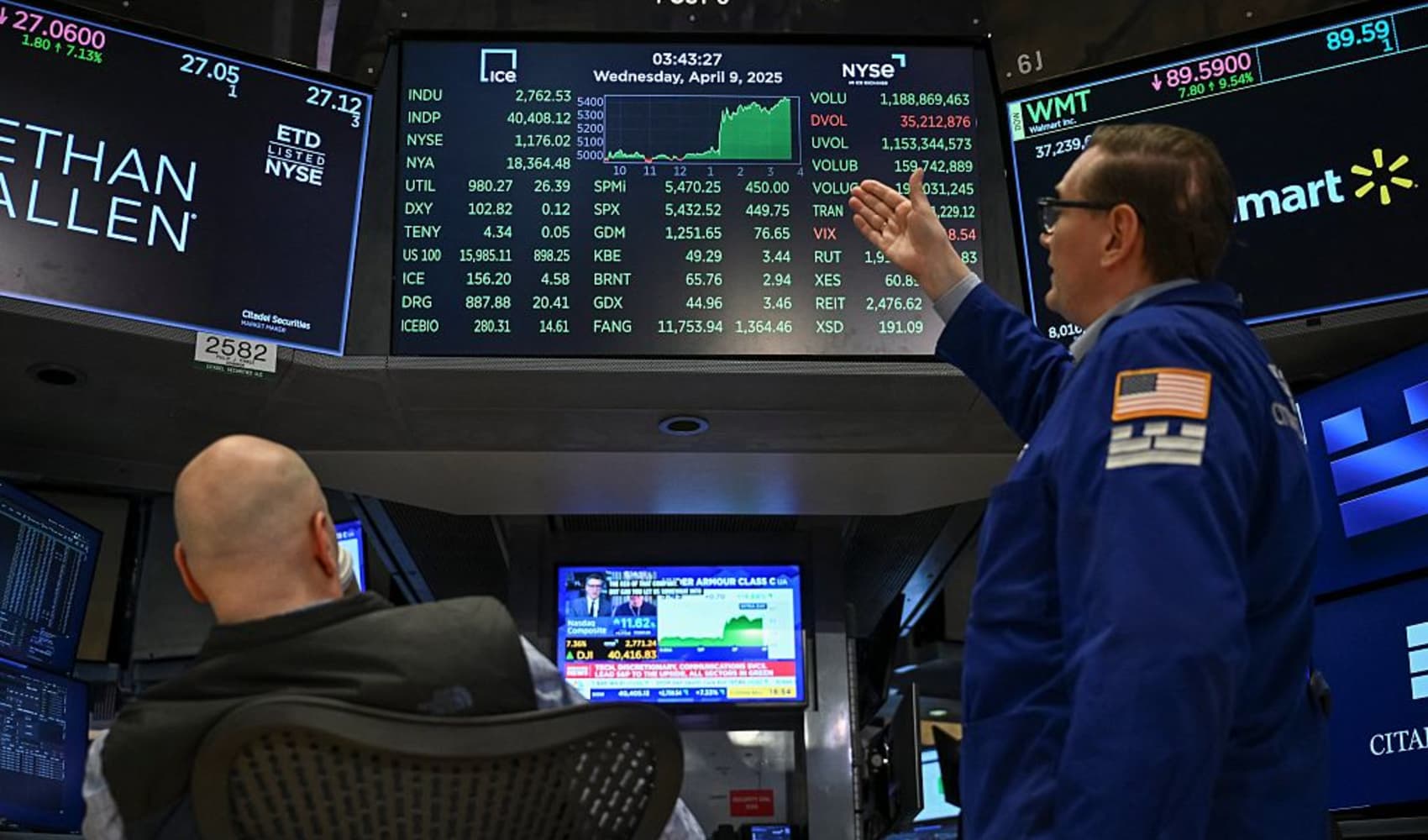Foreign Investors Fleeing America? Expert Warns of Exodus
Foreign Investors Fleeing America? Expert Sounds Alarm
Introduction: A Shifting Tide in Global Investment?
Are we witnessing a major shift in global investment patterns? According to seasoned economic expert Rebecca Patterson, that might just be the case. Her recent warning about a growing number of foreign investors becoming "skittish" about investing in America should have everyone paying attention. This isn't just about numbers on a spreadsheet; it's about the potential future of the American economy and its place in the global landscape. Think of it like a slow-motion earthquake – the tremors might be subtle now, but the long-term consequences could be significant.
So, what's causing this unease? What are the implications? And what can be done to address these concerns? Let's dive into the details and explore what this potential investment exodus could mean for the U.S. and the world.
Understanding Rebecca Patterson's Warning
Rebecca Patterson isn't just any commentator. As a former chief investment strategist at Bridgewater, she brings a wealth of experience and insight to the table. Her warning isn't based on a hunch; it's rooted in conversations she had with participants at the recent World Bank and International Monetary Fund meetings in Washington. These are the individuals who manage vast sums of money and influence global financial flows. If *they* are worried, we should be too.
What's Fueling the Skittishness?
Patterson specifically mentions tariffs as one factor, but she also hints at broader concerns about America's role in the world. Is it simply trade tensions, or is something deeper at play? We'll explore the possible underlying causes in more detail below.
Tariffs: A Major Headwind for Investment
Let's face it: tariffs are rarely a recipe for economic prosperity. They disrupt supply chains, raise costs for consumers, and create uncertainty for businesses. When companies don't know what the rules of the game are going to be, they're less likely to invest. Tariffs can act like a tax on investment, discouraging foreign companies from putting their money into American projects. It's like trying to build a house on shifting sands – nobody wants to risk their resources on something so unstable.
The Impact on Specific Industries
Which sectors are most vulnerable to the impact of tariffs? Industries that rely heavily on international trade, such as manufacturing, agriculture, and technology, are likely to be the hardest hit. Consider the ripple effect: increased costs for manufacturers can lead to job losses, reduced investment in new technologies, and a decline in overall economic activity.
Beyond Tariffs: Broader Concerns About America
While tariffs are a significant factor, Patterson suggests that they are not the only reason for the growing unease among foreign investors. What other factors might be contributing to this shift? The answer might lie in a combination of geopolitical tensions, domestic political instability, and concerns about the long-term economic outlook for the U.S.
Geopolitical Instability and America's Role in the World
The U.S. has traditionally been seen as a stable and reliable partner in the global economy. However, recent shifts in foreign policy and international relations may be causing some investors to question this assumption. A perception of increased unpredictability can make investors hesitant to commit their capital to American assets. It's like trying to navigate a ship through stormy waters – you're constantly worried about what lies ahead.
Domestic Political Uncertainty
Political polarization and gridlock in Washington can also deter foreign investment. When businesses are unsure about future regulations, tax policies, and government spending, they're less likely to make long-term commitments. A stable and predictable political environment is crucial for attracting foreign capital.
The Potential Consequences of Reduced Foreign Investment
What happens if a large number of foreign investors start pulling their money out of the U.S.? The consequences could be far-reaching, affecting everything from interest rates to job creation.
Impact on Interest Rates and the Dollar
Reduced foreign investment could put upward pressure on interest rates, making it more expensive for businesses to borrow money and invest in expansion. It could also lead to a weaker dollar, which would make imports more expensive and potentially fuel inflation. Think of it like a balancing act – if you take away one weight, the whole system can become unstable.
Job Creation and Economic Growth
Foreign investment plays a vital role in job creation and economic growth. When foreign companies invest in the U.S., they create new jobs, bring in new technologies, and boost overall economic activity. A decline in foreign investment could slow down economic growth and lead to job losses.
Identifying Opportunities Amidst the Concerns
Even amidst these concerns, opportunities for strategic investment in the U.S. market may emerge. Sectors benefiting from reshoring initiatives, technological innovation, or demographic shifts might still hold appeal for discerning investors.
Reshoring and Manufacturing Renaissance
The push to bring manufacturing back to the U.S. (reshoring) presents opportunities for investment in automation, robotics, and advanced manufacturing technologies. Companies that are able to capitalize on this trend may be well-positioned for growth.
Technological Innovation and Emerging Industries
The U.S. remains a global leader in technological innovation. Investments in areas such as artificial intelligence, biotechnology, and renewable energy could offer attractive returns for investors willing to take on the associated risks.
Strategies for Attracting and Retaining Foreign Investment
What can the U.S. do to address these concerns and attract and retain foreign investment? The answer lies in a combination of policy changes, strategic communication, and a renewed commitment to stability and predictability.
Policy Changes to Promote Investment
Reducing tariffs, simplifying regulations, and creating a more predictable tax environment could all help to attract foreign investment. A clear and consistent policy framework is essential for building investor confidence.
Strategic Communication and Investor Relations
The U.S. needs to do a better job of communicating its economic strengths and its commitment to global cooperation. Proactive investor relations can help to reassure foreign investors and address their concerns. It's all about building trust and fostering long-term relationships.
Global Economic Outlook and Alternative Investment Destinations
It's also important to consider the broader global economic landscape and the alternative investment destinations that foreign investors might be considering. Are other countries offering more attractive investment opportunities? What are the relative strengths and weaknesses of different economies?
Emerging Markets as Potential Competitors
Emerging markets such as China, India, and Southeast Asia are increasingly attractive destinations for foreign investment. These countries offer high growth potential, lower labor costs, and access to large and growing consumer markets. The U.S. needs to remain competitive in order to attract and retain its share of global capital flows.
A Call for Action: Addressing Investor Concerns
Rebecca Patterson's warning serves as a wake-up call. The U.S. needs to take proactive steps to address the concerns of foreign investors and ensure that it remains a competitive destination for global capital. The future of the American economy may depend on it.
Conclusion: Key Takeaways and the Path Forward
In conclusion, Rebecca Patterson's warning about foreign investors becoming "skittish" about investing in America highlights a potentially significant shift in global investment patterns. Tariffs, geopolitical instability, and domestic political uncertainty are all contributing to this unease. The consequences of reduced foreign investment could be far-reaching, affecting interest rates, job creation, and economic growth. To address these concerns, the U.S. needs to implement policy changes to promote investment, engage in strategic communication, and renew its commitment to stability and predictability. The time for action is now.
Frequently Asked Questions (FAQs)
Here are some frequently asked questions about the concerns of foreign investors in America:
- Why are tariffs a concern for foreign investors?
Tariffs increase costs for businesses, disrupt supply chains, and create uncertainty, making it less attractive for foreign companies to invest in the U.S.
- What other factors besides tariffs are making foreign investors nervous?
Geopolitical instability, domestic political polarization, and concerns about the long-term economic outlook for the U.S. are also contributing factors.
- How could reduced foreign investment impact the U.S. economy?
Reduced foreign investment could lead to higher interest rates, a weaker dollar, slower economic growth, and job losses.
- What can the U.S. government do to attract more foreign investment?
The U.S. government can reduce tariffs, simplify regulations, create a more predictable tax environment, and improve communication with foreign investors.
- Are there specific sectors in the U.S. that are still attractive to foreign investors?
Yes, sectors benefiting from reshoring, technological innovation (like AI and renewable energy), and demographic shifts may still offer attractive opportunities.



